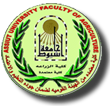Tomato (Solanum lycopersicum) is one of the most important crops for human health and
nutrition since its fruit is an important source of antioxidants and other bioactive compounds. Many
genetic and genomics resources have been developed and are today available for this species,
allowing to set up a genomic-assisted breeding approach for improving fruit quality. Among
genomic resources available, Solanum pennellii introgression lines (ILs) represent a valuable tool to
exploit the genetic diversity present in this wild species. Our goal was to decipher the genetic
mechanisms controlling ascorbic acid (AsA) content in tomato fruit. In a previous study, we
identified two ILs (IL7-3 and IL12-4) harboring QTLs that increase the content of this compound in
the fruit. Crosses between the two lines and selfing of the F1 progeny were performed in order to
pyramid the favorable QTLs carried by the 7-3 and 12-4 introgressed regions. Even though the F3
double homozygous plants obtained displayed AsA significantly higher than the cultivated parent, a
reduced yield was evidenced due to a negative QTL for yield carried by the 7-3 wild region. In
order to disrupt the linkage between favorable and unfavorable traits and to find candidate genes for
AsA, sub-lines of the regions IL7-3 and IL12-4 were established.
Taking advantage of the very recently release of S. pennellii genome sequence and of the
tomato reference sequence (SL2.50), 43 species-specific CAPS markers were designed (21 for
region 7-3 and 22 for 12-4) and used to obtain six different sub-lines for IL7-3 and one for IL12-4.
The search for candidate genes associated with AsA was carried out by exploring the annotation
and the Gene Ontology terms of the genes included in the introgressed regions. As result, we were
able to reduce the number of candidate genes controlling AsA in the fruit in each introgressed
region. As for the sub-line of IL12-4, it displayed high level of AsA in the fruit, thus allowing to
reduce the number of candidate genes from 12 to four. As for sub-lines of IL7-3, preliminary fruit
analysis of these sub-lines revealed different AsA in respect to the control genotype M82, indicating
that genes controlling this metabolite are still present in the narrowed wild regions. Further
molecular, biochemical and phenotypic analyses will be carried out to better characterize the
developed sub-lines. Moreover, these novel genotypes might be used in the future as genetic
materials for a breeding scheme aimed at obtaining new hybrids or improved varieties with higher
antioxidants levels.
Research Abstract
Research Department
Research Journal
The Joint Congress SIBV-SIGA, "Feeding the planet: plant science and breeding for the future of agriculture", Milano, Italy
Research Member
Research Publisher
NULL
Research Rank
3
Research Vol
8-11 September, 2015. ISBN 978-88-904570-5-0. Poster Communication Abstract-1.07.
Research Website
http://www.geneticagraria.it/attachment/SIGA_2015/1_07.pdf
Research Year
2015
Research Pages
NULL
 Do you have any questions?
Do you have any questions? 
